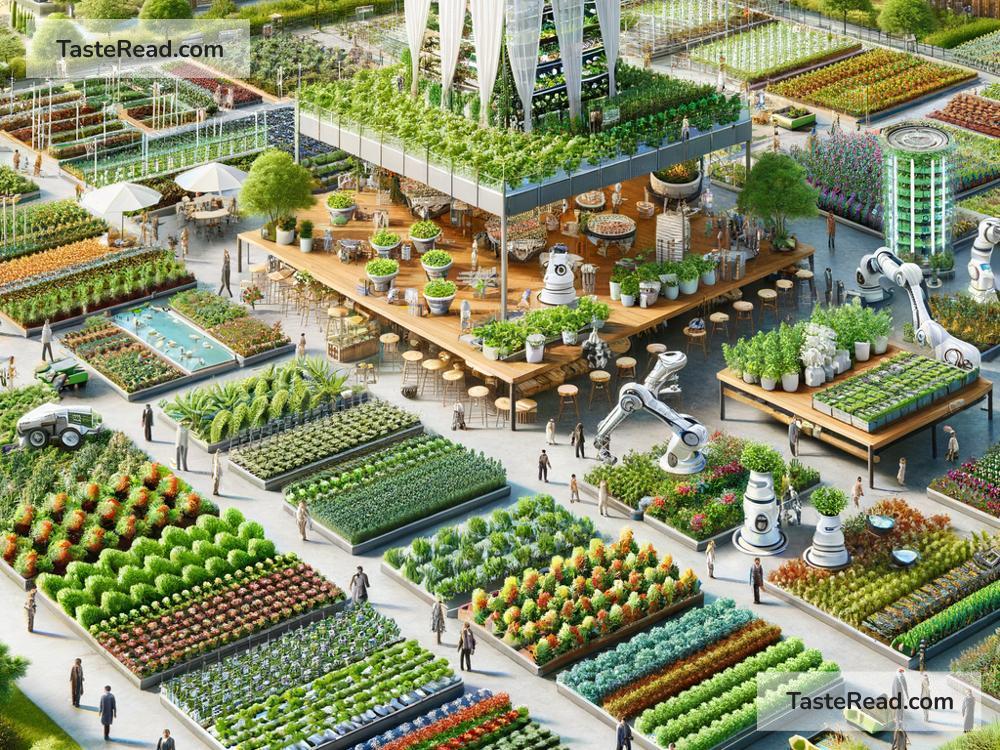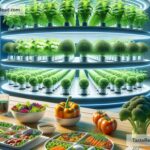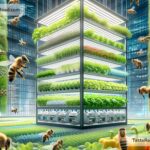The Future of Food and Biodiversity Conservation: A Shared Journey
Food is essential for all of us. Every meal we eat has a story that connects us to the land, water, animals, and plants that make it possible. But as the global population grows, the way we produce food is putting pressure on the environment. This is especially true for biodiversity—our planet’s rich variety of living organisms. So, how can we meet the growing demand for food without harming the environment? The answer lies in balancing food production and biodiversity conservation.
The Importance of Biodiversity
Biodiversity is the variety of life in all its forms: animals, plants, fungi, and microorganisms. It plays a central role in keeping ecosystems healthy and productive. For example, bees and other pollinators are essential for crops like almonds, apples, and tomatoes. Wildlife provides pest control, while healthy soil full of microorganisms helps plants grow. Biodiversity makes our food systems resilient to challenges, like diseases and climate change.
Unfortunately, biodiversity is under threat. Human activities—deforestation, overfishing, pollution, and unsustainable farming—are causing the loss of species at a rate far faster than natural extinction. If we continue down this path, the consequences will be dire. Less biodiversity means less food security, reduced adaptability to challenges, and weaker ecosystems.
Challenges in Food Production
Modern farming has brought great benefits, helping us feed billions of people worldwide. But it has also come with costs. Large-scale agricultural practices often involve clearing forests, using chemical fertilizers, and monocropping (growing only one type of crop). These methods damage ecosystems and reduce biodiversity. For example, cutting down forests for farmland destroys the homes of countless plants and animals. The heavy use of pesticides can kill bees, which are essential for pollination and crop growth.
Climate change is also adding pressure to food production. Rising temperatures, unpredictable weather, and droughts are affecting crops and livestock. Farmers around the world are struggling to adapt. At the same time, growing demand for meat and dairy is fueling intensive livestock farming, which contributes to greenhouse gas emissions and land degradation.
The Solution: Sustainable Food Systems
To protect biodiversity and ensure food security, we need to rethink how we produce, distribute, and consume food. Sustainable food systems can balance human needs with environmental conservation. Here are some key strategies:
-
Diversified Farming: Growing multiple types of crops instead of relying on monocropping helps support biodiversity. For example, rotating crops improves soil health and attracts a range of beneficial insects and animals.
-
Agroforestry: This practice involves combining trees and crops on the same land. Trees provide shade, improve soil fertility, and act as carbon sinks, while crops offer food production. It’s a win-win for biodiversity and farmers.
-
Reducing Food Waste: One-third of all food produced globally is wasted. By reducing food waste, we can lower the pressure to produce more. Simple changes, like smarter shopping and better food storage, can make a big difference.
-
Plant-Based Diets: Eating less meat and dairy can significantly reduce the environmental impact of food production. Plant-based diets use fewer natural resources and help lower greenhouse gas emissions.
-
Supporting Local and Traditional Farming: Indigenous communities often have farming techniques that respect biodiversity. Supporting small-scale, local farmers can reinforce sustainable practices while preserving cultural heritage.
-
Technology and Innovation: Advances in technology can help improve food production without damaging the environment. For instance, precision agriculture uses data to optimize water and fertilizer use, reducing waste. Vertical farming grows crops indoors using minimal space and resources.
How We Benefit from Biodiversity Conservation
Protecting biodiversity isn’t just good for the environment—it’s also crucial for our future. Biodiversity provides the resources and services that humans rely on. It makes food systems resilient to shocks, such as pests, diseases, and extreme weather. Conserving biodiversity also means protecting the ecosystems that give us clean water, fresh air, and fertile land.
In addition, eating a variety of foods that come from biodiverse systems can improve our health. Diverse diets that include whole grains, vegetables, fruits, and legumes are rich in nutrients and help fight diseases.
What Can We Do?
Every individual has the power to make a difference in conserving biodiversity while shaping the future of food. Here are small steps you can take:
- Choose sustainably sourced food products, such as organic or fair-trade items.
- Support local farmers and seasonal foods to reduce your environmental footprint.
- Reduce food waste by planning meals and storing leftovers properly.
- Be mindful of your diet—incorporate more plant-based meals into your routine.
- Stay informed and advocate for policies that encourage sustainable farming and conservation.
A Shared Responsibility
The future of food and biodiversity conservation is deeply intertwined. Farmers, scientists, governments, businesses, and individuals all have a role to play. By working together, we can create food systems that nourish people and protect the planet.
Nature has provided us with an incredible variety of resources to sustain life. It’s our responsibility to protect and celebrate this biodiversity for generations to come. After all, saving biodiversity isn’t just about preserving endangered species—it’s about protecting the foundation of our existence. Let’s make choices today that lead to a healthier tomorrow for both people and the planet.


